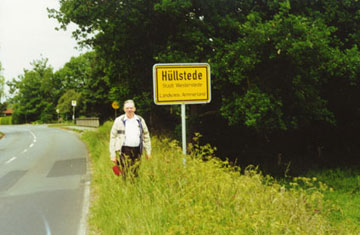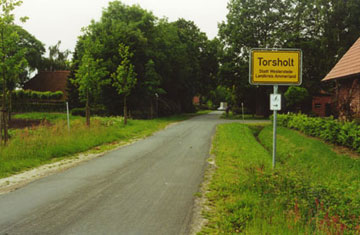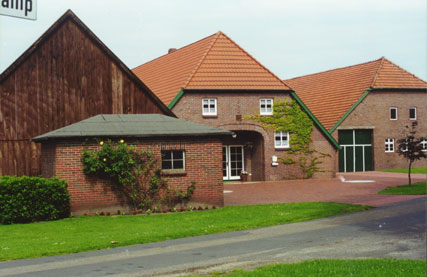
| Our ancestors Roots in Germany | |||||||
|
While traveling through the country of our ancestors, the homes and countryside were lush and beautiful. Villages such as Westerstede, Torsholt and Hulstede, near Oldenburg are the villages where our ancestors have their roots. The countryside is fairly flat but richly covered with trees and other vegetation. The richness of the land has not always been the case. During the time our ancestors were living in this area, the land was covered with a "hard pan" on which hardly anything grew except "heather". The "hardpan" was about 6 feet deep and had to be broken up for other crops to grow. The information about this slow process can be seen at the Cloppenburg Open Air Museum web site. Sorry, it is only in the German language. We visited the museum during our Germany stay and enjoyed it tremendously. There is so much history that is about our ancestors. Click here for a full visit of Cloppenburg. The complete site is in the German language, also.
|
|||||||
|
The homes throughout the countryside appear to be connected to the barns. The majority of the homes and barns are built with brick. These old homes are so very attractive. |
|||||||
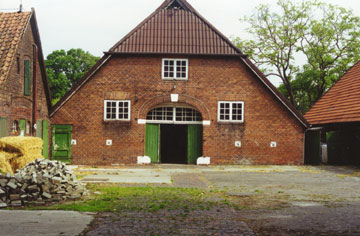 |
Photo on left is the home place of Helene Jaspers (b-1836) Wife of Johann Friedrich Neemeyer (b-1834) Home is in Torsholt, Germany Photo by Don Hellbusch |
||||||
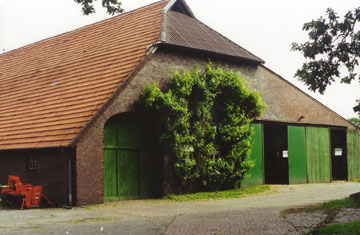 |
Photo on left is another building of the home place of Helene Jaspers (b-1836) Wife of Johann Friedrich Neemeyer (b-1834) Home is in Torsholt, Germany Photo by Don Hellbusch |
||||||
| To find out more information about how our ancestors lived, visit the following site: | |||||||
| When a person is interested in genealogy, that person has an urge to look at graveyards of an area to see if they recognize the names. While traveling the Wiefelstede and Westerstede area around Oldenburg, it was a stop that was a requirement for all of us. The cemeteries in Germany are beautiful and have the appearance of a park. As we walked through the cemeteries, so many of the names seemed very familiar to us. It felt as though we were walking through the Platte County, Nebraska and Nance County, Nebraska cemeteries. It stands to reason after thinking about it, of course, the majority of the people that went to north central Nebraska around Columbus came from the Oldenburg, Germany area.
The graves are "recycled" but still depict a lot of history and dates. We found numerous grave markers of the families of our relatives that stayed in Germany. The plots are "rented" by the living family and are maintained by that family. To find out more about this recycling visit "The Recycling of Graves in Germany". |
|||||||
|
|||||||
|
We so often wonder why our ancestors came to America. What kind of life did they have when they were in Germany? What an undertaking to move a large family with numerous children to an unknown country! The information as linked below gives a brief insight about the reasons and the massive exodus from Germany during the 1800's. |
|||||||
|
The history of the emigration from the former Amt Damme (Oldenburg), particularly to North America, within the years 1830 -- 1880, written by Johannes Ostendorf Contents overview (Foreword by the Website Editor) |
|||||||
|
Emigrants from the former Amt Damme, Oldenburg (now Niedersachsen), Germany, |
|||||||
| Beginning of the Emigration | |||||||
|
The emigration was very extensive!
These articles are about a particular settlement but should apply to our relatives, also. |
|||||||
|
Our ancestors in our history were generally "Hausmann", "Heuer-Mann", or "Koter". |
|||||||
|
The Heuerling System had its historical beginnings in the 16th and 17th Century. |
|||||||
|
The Heuerleute System in Holdorf, according to Early Sources |
|||||||
|
|
|
elaine@hellbusch.com Daughter of Louis and Hilda Hellbusch Copyright © 2002 |
|
|
|
|
